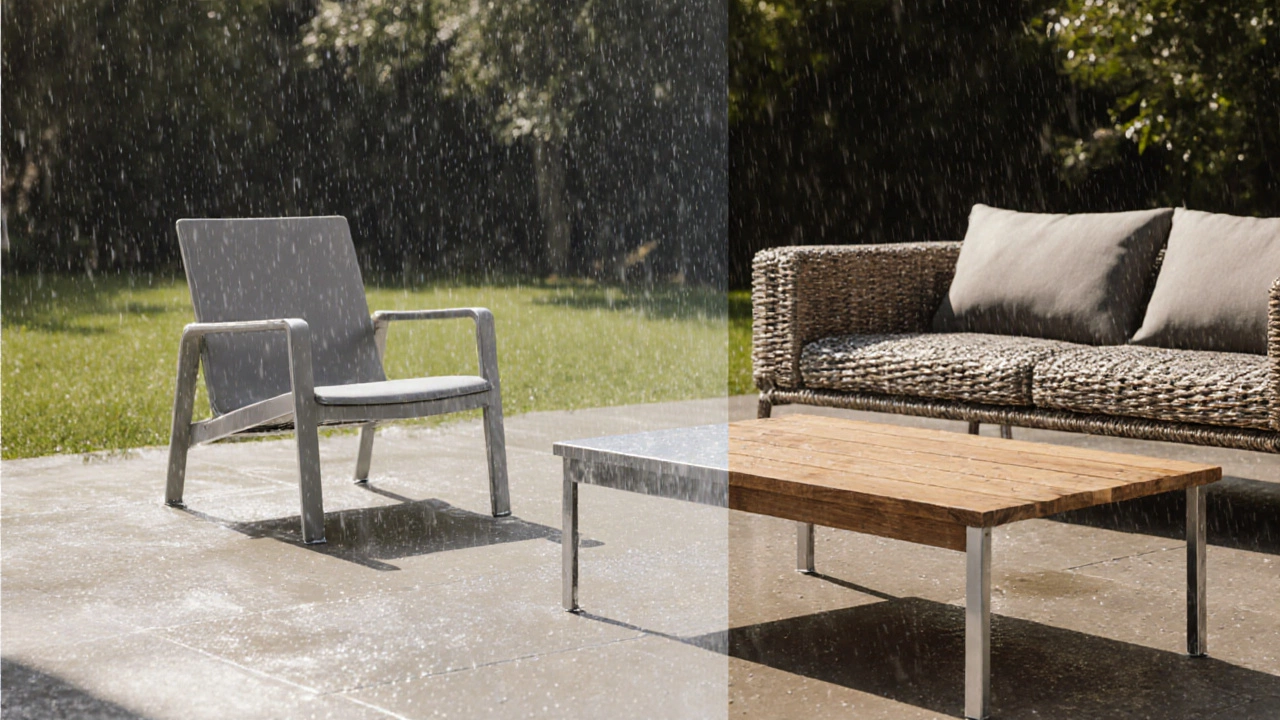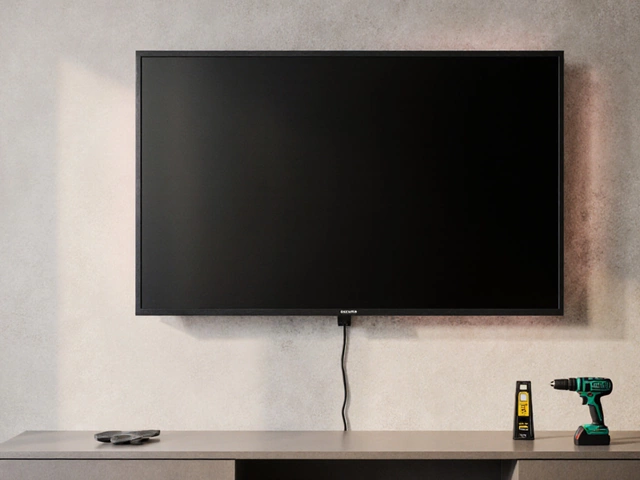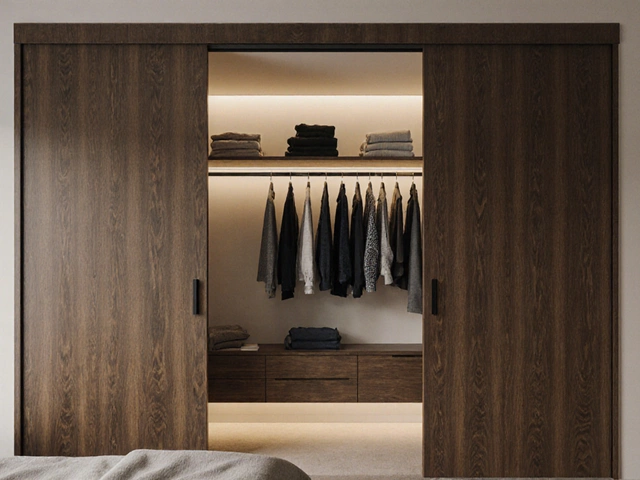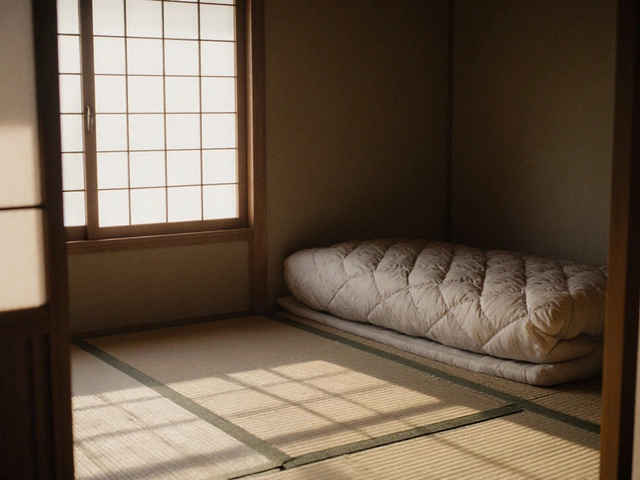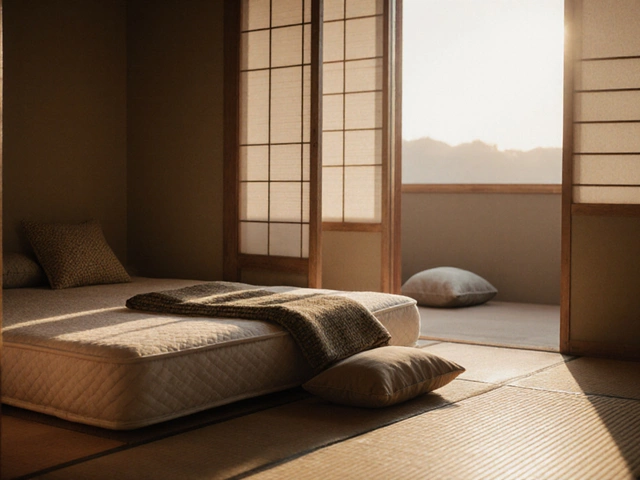Outdoor Furniture Material Selector
Recommended Material:
Why This Material?
When you’re hunting for durable outdoor furniture, you want pieces that laugh at rain, shrug off UV rays, and stay solid through seasons. But not all furniture is built the same. Below is a no‑fluff guide that helps you pick the toughest materials, keep maintenance realistic, and match your climate without blowing your budget.
Key Takeaways
- Aluminum, synthetic rattan, and powder‑coated steel lead durability rankings.
- Teak offers natural beauty but needs annual oiling to stay solid.
- Polycarbonate tops earn top marks for shade structures, not seating.
- Match material to climate: salty air favors synthetic, heat‑intensive zones favor powder‑coated metal.
- Investing in higher‑priced, low‑maintenance pieces saves money over a 10‑year span.
What Makes Outdoor Furniture Truly Durable?
Durability isn’t a vague buzzword-it’s a blend of three measurable factors:
- Resistance to moisture and rot. Water infiltration causes swelling, rust, or fungal decay.
- UV stability. Sunlight can fade colors, crack plastics, and weaken wood fibers.
- Structural strength. How well a frame bears weight over years of use.
When you compare products, look for third‑party testing results (e.g., ASTM D-7032 for UV resistance) or manufacturer warranties that explicitly cover these three points.
Core Materials and Their Durability Profiles
Below each material is introduced with schema.org microdata so search engines can map the knowledge graph accurately.
Aluminum is a lightweight metal that forms a natural oxide layer, shielding it from rust. Most premium garden sets use high‑grade, powder‑coated aluminum that resists dents and fading for 15‑20 years.
Teak is a dense hardwood native to Southeast Asia. Its natural oils act as a built‑in preservative, allowing it to survive without treatment for up to a decade. When exposed continuously to rain, it will gray unless you apply teak oil or sealant annually.
Wrought Iron offers unmatched strength. Its porous surface, however, is prone to rust unless meticulously powder‑coated or galvanized.
Synthetic Rattan (often called resin wicker) is a plastic blend that mimics natural rattan. It resists moisture, UV rays, and insects, making it ideal for coastal environments.
Polycarbonate is a high‑impact plastic used mainly for shade sails and table tops. While it won’t support heavy loads like a metal frame, it excels at withstanding temperature swings without cracking.
Stainless Steel (type 304 or 316) resists corrosion even in salty air. Its main drawback is weight-large sets can be difficult to move.
UV‑Resistant Fabric is treated with acrylic or solution‑dye technology that blocks up to 95% of UV radiation. It prevents fading and reduces heat buildup on cushions.
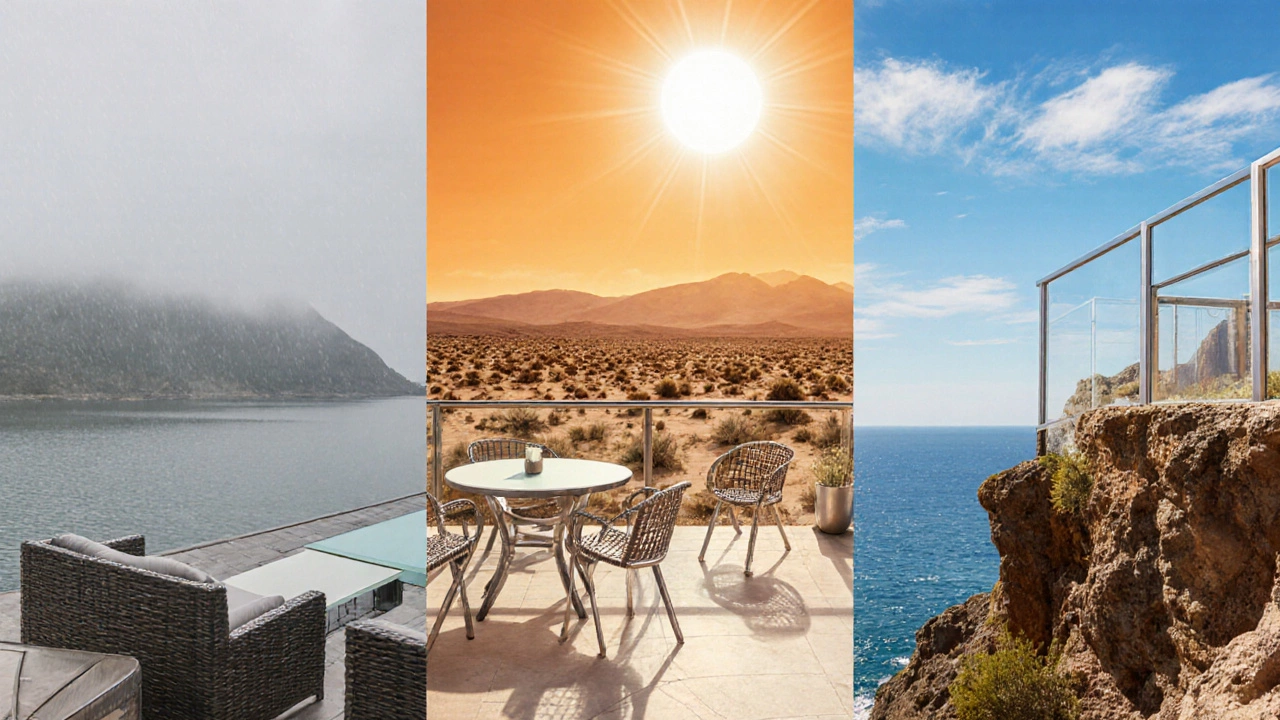
Side‑by‑Side Comparison
| Material | Typical Lifespan | Maintenance Needed | Best Climate | Average Price Range (USD) |
|---|---|---|---|---|
| Aluminum (powder‑coated) | 15‑20 years | Wipe down annually | All climates, especially humid | $300‑$1,200 per set |
| Teak | 10‑25 years (untreated → 10) | Oil/seal every 6‑12months | Dry to moderate humidity | $500‑$2,500 per set |
| Wrought Iron (powder‑coated) | 12‑18 years | Inspect for rust quarterly | Arid to temperate | $400‑$1,800 per set |
| Synthetic Rattan | 12‑15 years | Hose down after storms | Coastal, high‑humidity | $350‑$1,300 per set |
| Polycarbonate (table tops) | 10‑12 years | Gentle clean, no chemicals | Extreme temperature swings | $200‑$800 per table |
| Stainless Steel | 20‑30 years | Wipe with mild soap | Coastal, salty air | $600‑$2,200 per set |
| UV‑Resistant Fabric | 5‑8 years (cushions) | Store cushions indoors seasonally | Sunny, high‑UV regions | $100‑$500 per set |
Matching Material to Your Climate
If you live near the Great Lakes, like Mississauga, expect humid summers, snowy winters, and occasional lake‑effect rain. In that mix, powder‑coated Aluminum and Synthetic Rattan perform best because they won’t rust or swell.
For desert‑style backyards (Arizona, Nevada), heat‑expansion is a bigger worry. Choose thermally stable Polycarbonate table tops and sturdy Stainless Steel frames that tolerate temperature swings without warping.
Coastal regions (Nova Scotia, BC coast) demand salt‑corrosion resistance. Stainless Steel (type 316) and Synthetic Rattan are the go‑to choices.
Cost vs. Lifespan: The Real ROI
It’s tempting to grab the cheapest patio set, but a low‑budget set of untreated pine will likely need replacement in 3‑4 years. Let’s run a quick ROI example:
- Aluminum set: $800, 18‑year lifespan → $44 per year.
- Teak set (oil‑treated): $1,600, 20‑year lifespan → $80 per year, plus $80 yearly oil = $160 per year total.
- Synthetic Rattan: $700, 13‑year lifespan → $54 per year.
Even when you add maintenance, aluminum remains the most cost‑effective for a typical Canadian climate.
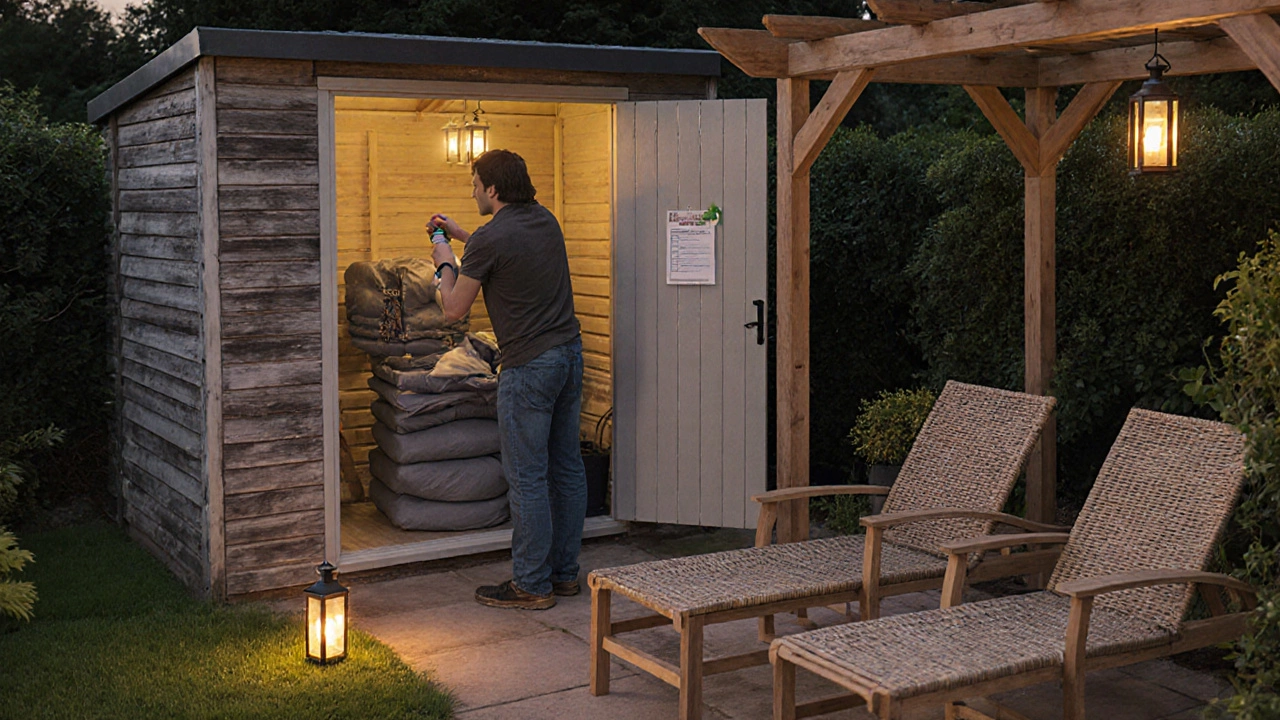
Buying Checklist - How to Spot True Durability
- Check the warranty length. Anything under 3 years is a red flag.
- Ask for the material grade. For metal, look for “6063‑T5 aluminum” or “316 stainless steel.”
- Inspect joint construction. Welded or bolted frames beat glued or doweled connections.
- Feel the finish. Powder‑coated surfaces should feel uniformly smooth, not flaky.
- Ask about UV‑blocking treatments on fabrics. Look for “solution‑dye” or “Acrylic 100% UV‑block.”
When a seller can’t answer any of those, walk away. Reputable brands will have these specs on the tags or data sheets.
Maintenance Hacks to Extend Life
- Seasonal storage: In Mississauga, cover chairs with breathable furniture covers during winter, or store them in a garage.
- Gentle cleaning: Use a soft‑bristled brush and mild dish soap; avoid pressure washers on powder‑coated metal.
- UV protection: When possible, place umbrellas or pergolas over cushions to cut sun exposure.
- Rust prevention: For any iron‑based frames, apply a rust inhibitor spray once a year.
Frequently Asked Questions
Which outdoor furniture material lasts the longest?
Stainless steel (especially marine‑grade 316) can reach 30years with minimal upkeep, making it the longest‑lasting option for harsh, salty environments.
Is synthetic rattan really as strong as real rattan?
Synthetic rattan is a plastic blend that outperforms natural rattan in moisture resistance and UV stability. It can bear typical patio loads while resisting rot, which natural rattan cannot.
Can I use outdoor cushions on metal frames without worrying about mold?
Yes, as long as the cushions are made from UV‑resistant, quick‑dry fabric and you store them indoors or use breathable covers during wet months. Proper ventilation prevents mold growth.
Do powder‑coated aluminum chairs rust?
The powder coating creates a protective barrier that prevents rust. Only if the coating chips or scratches extensively will the underlying aluminum be exposed, at which point you should touch up the finish.
How often should I oil teak outdoor furniture?
Apply teak oil once a year in the early spring. If the wood looks dry or the color has faded to a silver gray, a second coat may be needed.
Bottom Line
For most Canadian homeowners, powder‑coated Aluminum and high‑grade Synthetic Rattan strike the best balance of durability, low maintenance, and price. If you’re willing to spend extra for timeless elegance and don’t mind periodic oiling, teak adds a natural charm that lasts decades.
Start with the buying checklist, match material to your local climate, and commit to simple seasonal care. Your patio will stay inviting year after year without turning into a costly renovation project.

